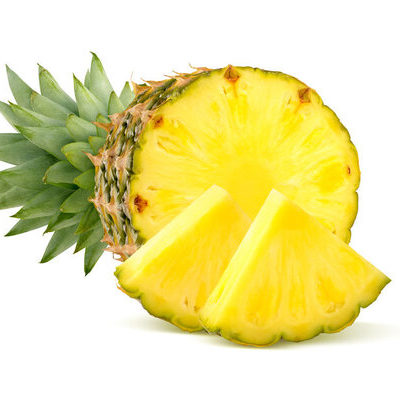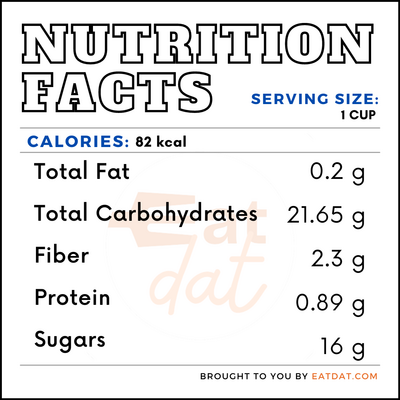
Pineapple
What is a Pineapple?
The pineapple (Ananas comosus) is a tropical fruit that is tough and thorny on the outside and has a hard, yellow flesh inside. The fruit is made of individual berries growing around a central core, otherwise known as a collective fruit or a multiple fruit.
There are dozens of different varieties of pineapples, including:
- Smooth Cayenne
- Red Spanish
- Queen
- Abacaxi
- Pernambuco
- Mordilona
- Kona Sugarloaf
- Brecheche
- Singapore Red
- Panare
Origin of pineapple
This fruit originally grew in the wild in Brazil, Paraguay, and other parts of South America. It was an integral part of the diet of Native Americans. In 1493, Christopher Columbus came across the fruit and brought it to Europe, where wealthy Europeans grew it in greenhouses. These European explorers also transported the fruit to Asia, where the climate was conducive for growing it. In the early 1800s, this fruit was introduced into Hawaii, and the gaining popularity of its juice gave a boost to production in the 1930s.
Commercial production
Today, the main producers of pineapple are Thailand, the Philippines, Mexico, Costa Rica, Chile, Brazil, China, Indonesia, Hawaii, India, Bangladesh, Nigeria, Kenya, Democratic Republic of Congo, Ivory Coast, Guinea, Dominican Republic, and South Africa. The fruit grows best in areas with heavy rainfall and mild temperatures. The most ideal soil for this fruit’s cultivation is slightly acidic and well-drained. However, it is not highly particular about the type of soil.
Nutrition
A single cup of this fruit contains approximately:

It is rich in carbohydrates and vitamin C and also provides vitamin A, calcium, iron, thiamin, riboflavin, vitamin B-6, folate, pantothenic acid, magnesium, manganese, potassium, and beta-carotene. Pineapple contains large amounts of bioactive compounds, dietary fiber, vitamins, minerals, and micronutrients. The fruit has anti-inflammatory and antioxidant properties, and is also good for digestion and improving bowel movement. Additionally, it contains bromelain, which has a host of positive health effects and may help in preventing cancer, improving blood circulation and preventing clots, and aiding wound healing.
Pineapple recipes
This fruit is versatile and can be used in preparing different desserts, cocktails, and juices. It is often used as an ingredient in different salads. The fruit lends itself to marinades in order to impart a sweet taste to the final dish. Also, it is extensively used in preparing sauces, jams, jellies, preserves, and chutneys. Here are a few popular recipes:
- Fresh Fruit Juice
- Pineapple Cake
- Pininyahang Manok
- Udang Masak Lemak Nenas
- Joll of Rice
- Gojju
- Pachadi Onam Sadya
- Sambal Nenas
- Nastar Cookies
- Fried Rice
- Selada Nanas
- Hawaiian Pasta Salad
- Chutney
- Caramelized Pineapples
- Coleslaw Salad
- Empanada de Pina
FDA regulations
The FDA describes all fresh fruits, including pineapples, as a raw agricultural commodity and strictly regulates all aspects of their growing, harvesting, packing, and storage. The FDA also regulates canned pineapples. They are defined as food prepared from mature, fresh or previously canned, pineapple from which peel and core have been removed.
References
Kerala Agricultural University, Pineapple Research Station, Vazhakulam, http://prsvkm.kau.in/book/history
Jagdish Reddy, Techniques of Pineapple Farming Crop, Pineapple Farming & Cultivation Techniques – A Full Guide, AgriFarming, https://www.agrifarming.in/pineapple-farming
Mohd Ali, Maimunah et al. “Pineapple (Ananas comosus): A comprehensive review of nutritional values, volatile compounds, health benefits, and potential food products.” Food research international (Ottawa, Ont.) vol. 137 (2020): 109675. doi:10.1016/j.foodres.2020.109675, https://pubmed.ncbi.nlm.nih.gov/33233252/
Rathnavelu, Vidhya et al. “Potential role of bromelain in clinical and therapeutic applications.” Biomedical reports vol. 5,3 (2016): 283-288. doi:10.3892/br.2016.720, https://www.ncbi.nlm.nih.gov/pmc/articles/PMC4998156/
